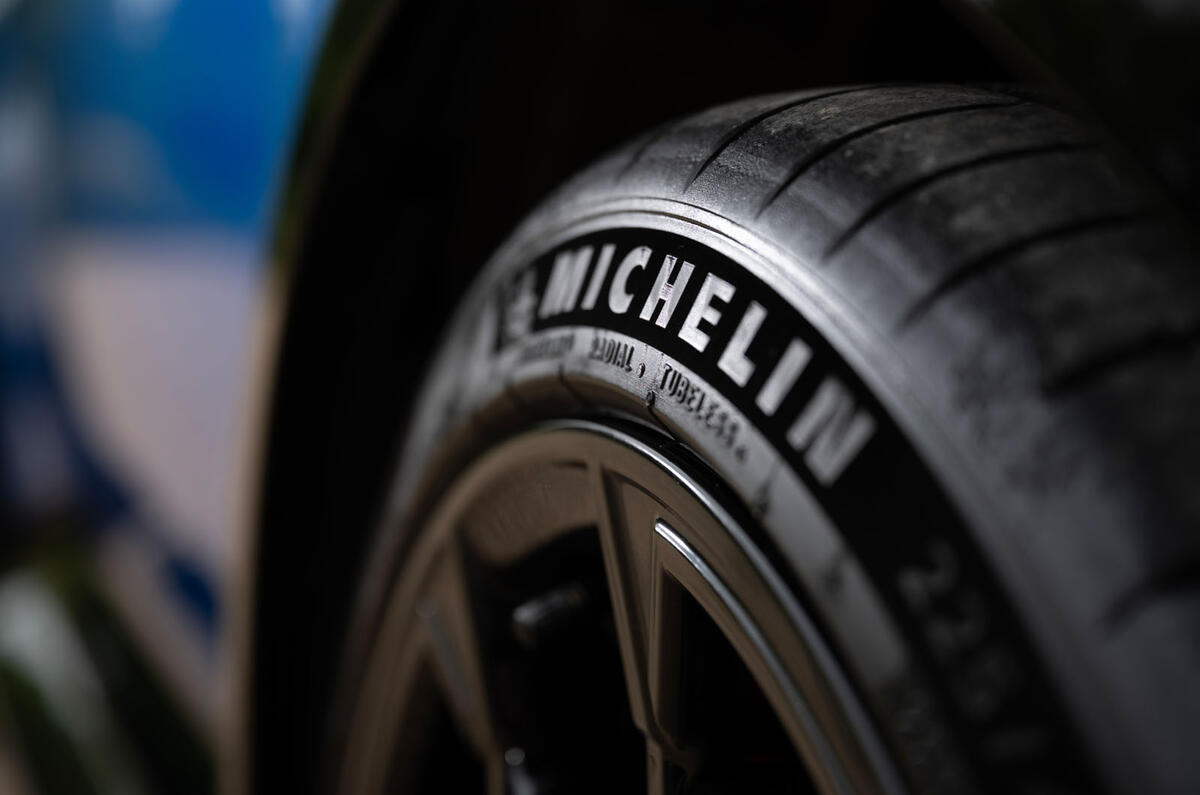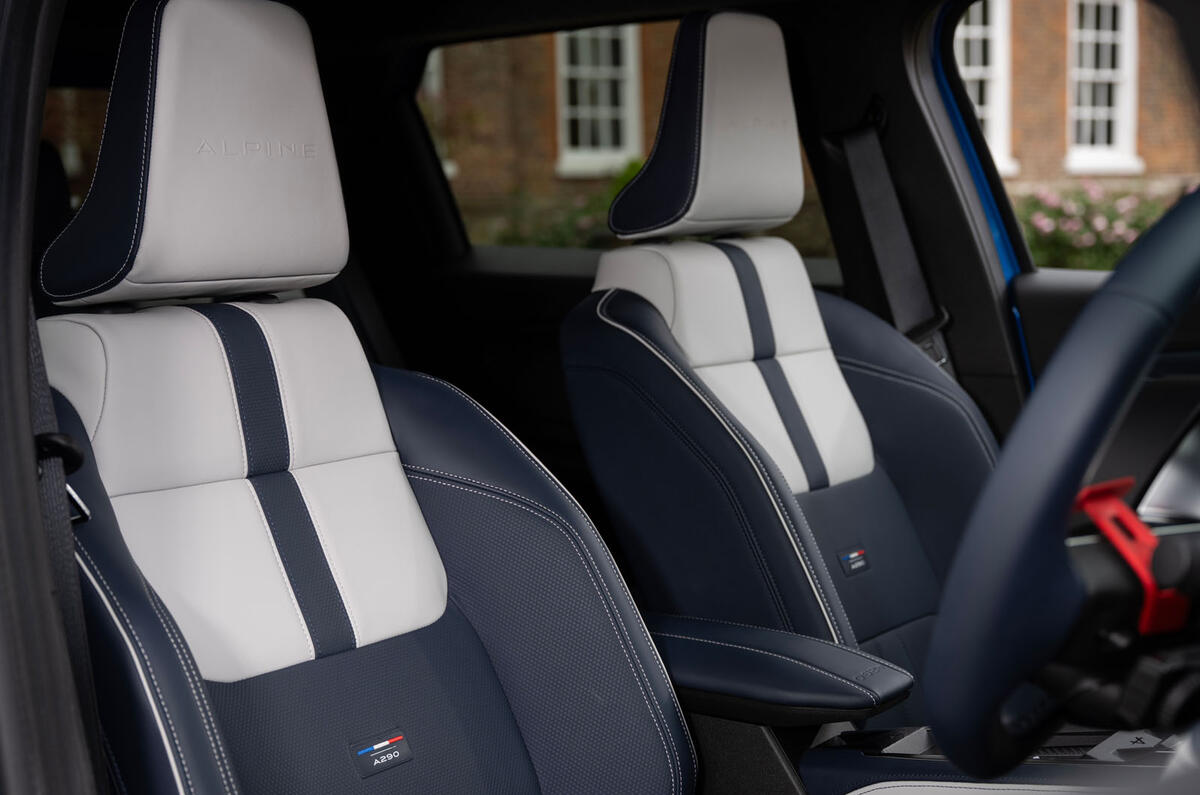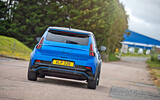The A290 takes the Renault 5's interior and ramps it up a notch. We've only driven the leather-lined, range-topping GTS trim so far, but for a small car, this feels like a very special, expensive cabin. It's a little dark, but the two-tone blue leather looks unusual but classy. While you can easily find some some cheaper mouldings in the Renault 5, you have to look much harder in the Alpine.
There is a touchscreen, of course, but it runs Google’s automotive software which is quick to respond and largely simple to navigate, while climate functions, the door locks, driving assistance switches, the lights, and stability control are all on separate, physical buttons. For us it gets the blend right.
There are some toys on the touchscreen, by the way. G-meters and the like as you might expect, but some gamification functions like a 0-62mph measurer, plus tutorials on how to corner better. Gimmicky, granted, but given Alpine talks things like lift-off oversteer in it, it’s nerdy gimmicky, so I don’t mind that.
They claim the steering wheel is F1 inspired, which means it’s not quite round and has some coloured buttons on it, one for drive modes, one for maximum overtaking urge (pushing the throttle through a kick-down point does the same) and a dial to change the amount of regen.
The front seats are pleasingly and large and comfortable, but the bonier members of our test team found themselves sliding around too much and wished for a more serious bucket seat or some adjustable side bolsters. As in the Renault, you won't be buying the A290 for the rear legroom. You can just about fit four adults in, but only as long as none of them are too tall and they're open to compromise. In any case, having five-doors is a practicality advantage, the boot opening is large and at 326 litres, the boot itself is a pretty decent size for a small car.
One other scarcely believably weird thing: keen to have commonality between Alpines, the gearshift buttons have been moved to the centre console like the A110s, but that’s where the cupholders would be on the R5, so there aren’t any. Front door pockets are small and the rear have no door pockets at all. Apparently cupholders will become available as an accessory later but us strikes me as an amazing oversight.





























































